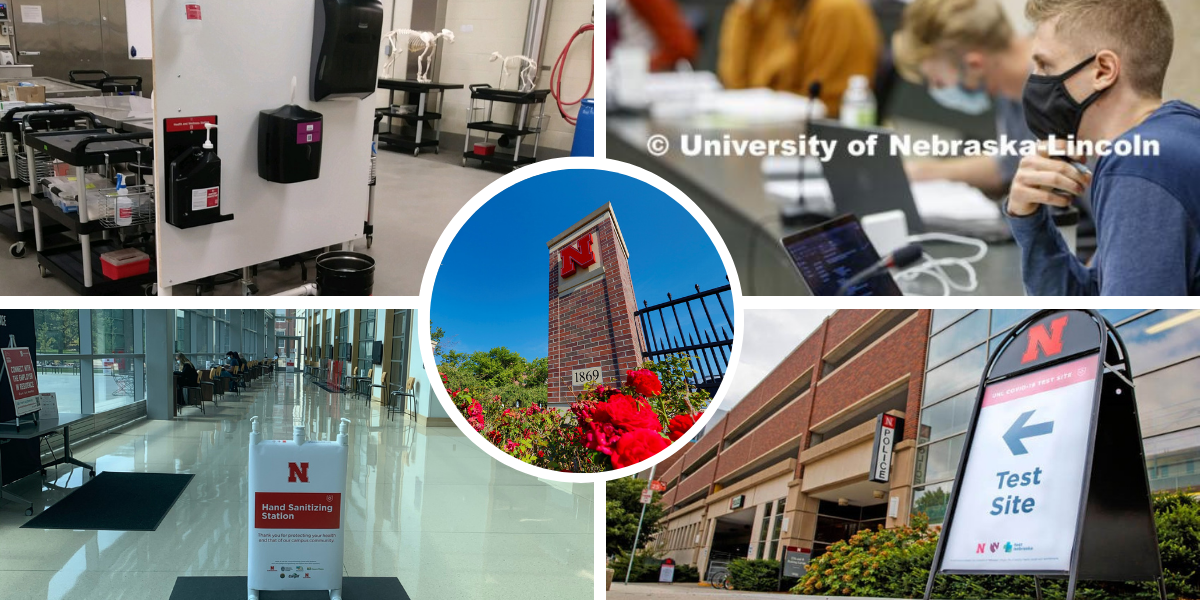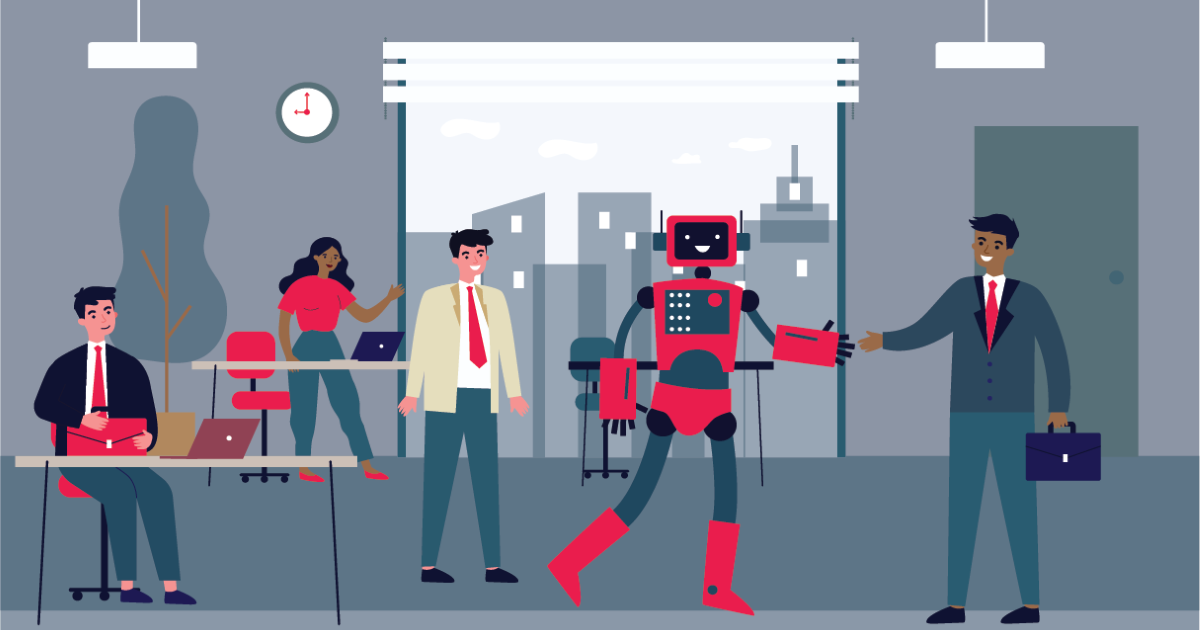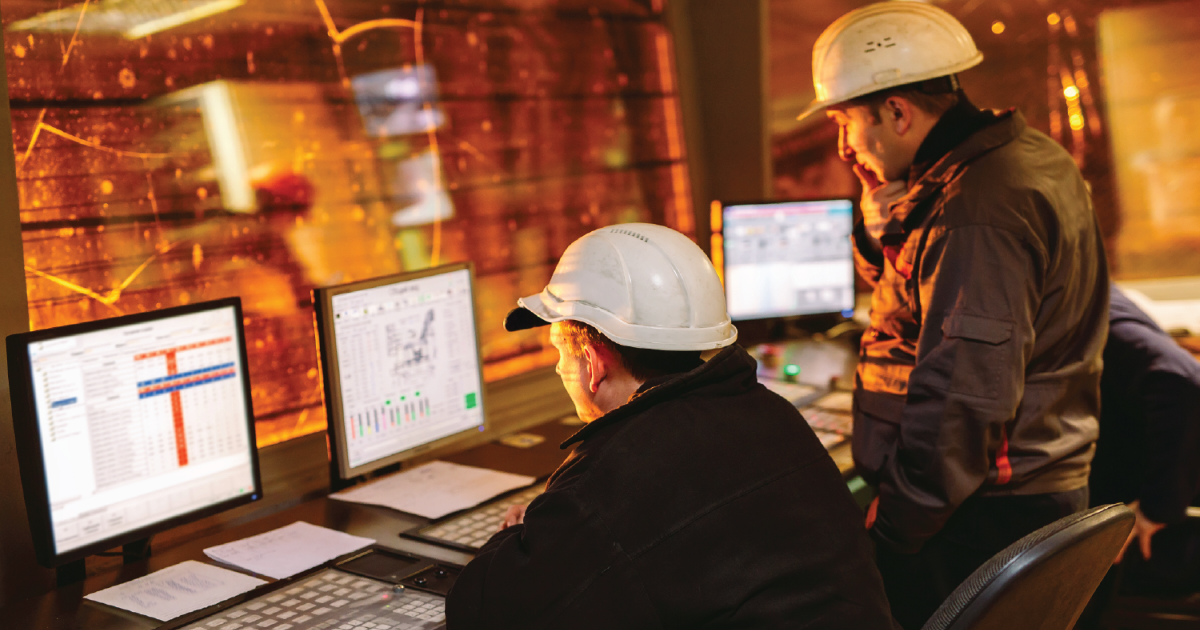University of Nebraska-Lincoln on Reopening Campuses Safely
Jim Jackson, Associate Vice Chancellor of University Operations, University of Nebraska-Lincoln

The University of Nebraska-Lincoln (UNL) strives to offer students the best university experience possible. When COVID-19 impacted campus in March 2020, classes shifted to remote mode. The experience of students and faculty was not optimal during the last few weeks of the Spring 2020 semester.
In late spring, campus leadership determined that UNL would offer in-person classes in Fall 2020. In situations where COVID-19 may limit in-person class attendance, UNL wanted to ensure a better remote learning experience as a part of a hybrid learning model. We believe the best way forward is with a “face-to-face with space” mode combined with intensive health and safety protocols. Once our executive leadership team made that decision, our job was to adapt in every way to create a safe environment.
From lockdown to reopening: lessons learned
We are a very predictive, proactive institution when it comes to facilities operations utilizing automation systems. We spent many years using various technologies and related data to get to this state of operations. That changed during the pandemic, as we had to start reacting to the rapidly changing information to provide campus support.
Under the initial COVID-19 lockdown, we decided to take advantage of low- or no-occupancy in buildings to conserve energy to achieve cost savings. We also wanted to minimize repetitive work: We did not want to keep going back and cleaning rooms that stayed unoccupied since the last cleaning. This allowed us to target our limited staffing towards enhanced cleaning protocols of occupied spaces and other COVID-19 responses. The above two goals were achieved by leveraging data from two key systems: card access and the building automation system. Our card access system helped us track entry to the buildings by designated employees, and occupancy sensors tied to our BAS indicated occupancy in specific areas or rooms.
As we moved toward reopening, we built on the lessons learned from lockdown data, with even greater measures for safety and wellness. Our challenge was to work together to really see what we were capable of, how fast we could prepare and, in some cases, whether it could be done. We had to quickly determine how to support staff, procure materials, and establish protocols and policies. At that time, many necessary products like hand sanitizer, disinfectant wipes and face masks were unavailable. Government guidelines were not necessarily clear, and they changed often. We had to be forward thinking in many areas.
Grassroots operations and leadership
Because of the lack of supplies, one of the first things our research team did was get FDA certification to produce hand sanitizer on campus. In three days, we set up a production line using food grade ethanol. To date we have produced 195,000 gallons of hand sanitizer. We designed and built over 1,000 three-gallon dispensers with PVC pipes using double pump systems. We built over 600 health and wellness stations on campus, one in every classroom. We also needed an alternate health setup for technology products like keyboards, because hand sanitizer has glycerol, which leaves a residue.
The confidence of producing our own hand sanitizer and disinfectant meant we were not at the mercy of suppliers; that enabled us to really focus on the basics of COVID-19 protection. That experience opened our way of thinking about everything from supplies and dispensing to staffing and classrooms. We implemented the now-standard physical distancing, mask reminders, directional signage, and de-densifying strategies.
Much of facilities work is logistical that runs under the surface, but that is critical to the functioning of the institution. When campus was mostly unoccupied, we had to centralize receiving packages from all delivery providers including live animals and research products. We shared some custodian staff with the police department to train as security officers. This was necessary to monitor the vacant buildings. We needed supplemental transportation because our local buses announced a social-distancing program within the buses with a maximum capacity of 11. We worked with private mega-bus providers to serve the campus while allowing physical distancing. Storage and warehouse capabilities were overwhelmed; we had to find space to store large volumes of PPE, IT equipment, material to build plexiglass shields, etc.
Instructional technology
Our ITS group evaluated classroom technology to ensure a better remote learning experience for hybrid or fully-remote class offerings. UNL has had plans to upgrade the IT infrastructure in our classrooms; the pandemic just accelerated the timeline. We plan to upgrade all network infrastructure to avoid congestion issues with remote/hybrid learning. Classrooms also did not have cameras, microphones and tech stations; UNL has made substantial investment to amend that situation. We also increased Wi-Fi coverage outside the buildings to improve outdoor learning. Current in-person learning is using a staggered approach. Most classes that were offered in-person remain that way; they simply rotate in-class with remote learning.
Air quality
In the beginning, the CDC did not have specific air quality parameters; that changed. Fortunately, we have a very adaptable building automation system so we were able to make program changes to follow the guidelines. We leveraged that system and immediately increased our minimum fresh air intake to twice as much as ASHRAE recommended. The number of air changes required varies between buildings with different uses and we have the flexibility in our control system to accommodate any future recommendations.
Contact tracing
UNL understands that it is everyone’s responsibility to stay safe and healthy. Our website has extensive protocol information, and students sign the Cornhusker Agreement. People are self-monitoring for symptoms through an app developed in partnership with University of Nebraska Medical Center in Omaha. The community is recommended to download the app and self-screen every day before they come to campus.
We have a test site on campus that is made possible through partnership with the State of Nebraska TestNebraska program, and with our University Health Center. Lincoln-Lancaster County Health Department receives test results from all testing in the county, including the campus test site, and can identify UNL affiliated cases for reporting as if we were our own city. We collaborate with Lincoln-Lancaster County Health Department (LLHCD) for contact tracing. Collaboration with LLCHD is critical for monitoring the data to identify any areas of concern, such as developing clusters in group living environments.
Collaboration and growth
The most amazing part of this process is the collaborative interaction between our team and the university’s academic and research teams. We have a greater understanding of what they do, and in return, the academic team better understands the support we provide beyond just cleaning and keeping buildings open. There is a newfound respect within relationships and academics appreciate the ability of our staff to leverage technology.
The trust built during COVID-19 removed some of the bureaucracies in place. Our chancellor and executive leadership team empowered us to make decisions, to create plans and strategies without micromanagement. The fundamental result is the tremendous growth of our staff who now have the experience to take ownership and lead and be innovative. It is a priceless transformation.
This Week’s Sponsor
Yardi® develops and supports industry-leading investment and property management software for all types and sizes of real estate companies. Established in 1984, Yardi is based in Santa Barbara, Calif., and serves clients worldwide. For more information on how Yardi is Energized for Tomorrow, visit www.yardi.com.
Read Next
 4/18/2024
4/18/2024
Best Practices for Managing Lease Renewals When your commercial leases come up for renewal, it’s a great opportunity to assess your real estate portfolio, consider the value of current leases and possibly negotiate better terms.
 4/11/2024
4/11/2024
3 Reasons to Incorporate AI Into Your Talent Retention Strategy Introducing new technology into the workplace is often met with suspicion.
 4/4/2024
4/4/2024
Operational Technology (OT) Data Data has been a cornerstone of business since the early days of computing in the 1960s.
 3/28/2024
3/28/2024
The Tech-Forward Response to Rising CRE Cap Rates is Also People-First Cap rates on commercial real estate have been rising for five consecutive quarters, leading to an estimated 20% drop in value for many property types, according to CBRE’s latest U.S. Real Estate Market Outlook.






.jpg)

%200827.png)


